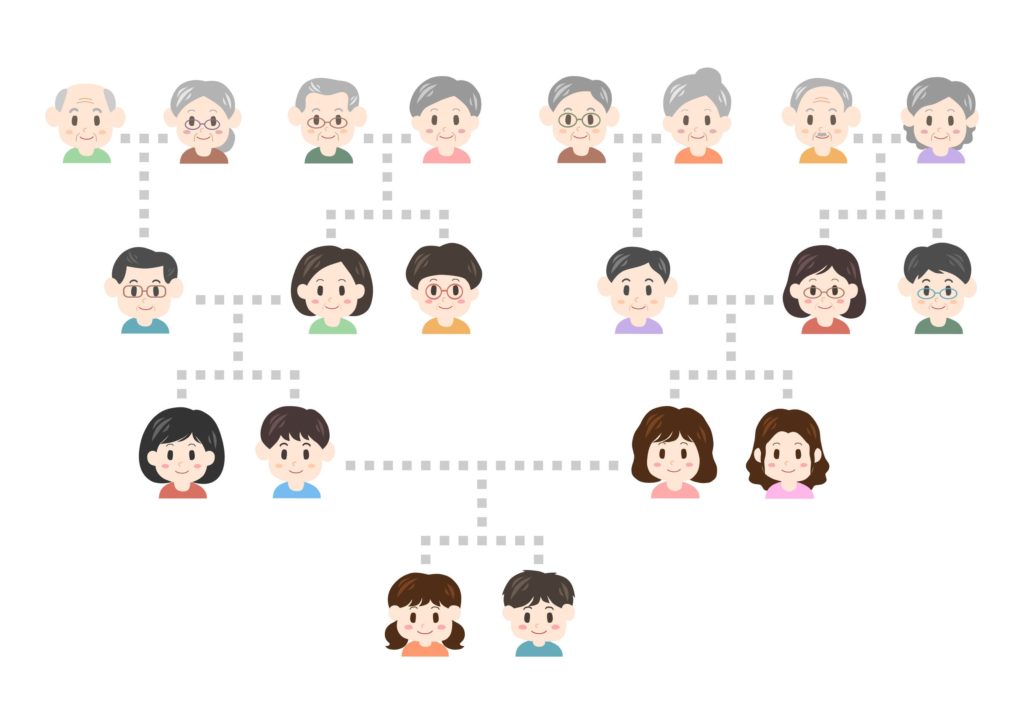We inherit our cells’ mitochondria from our mother. These energy-producing organelles are present in large numbers in most cells, meaning that cells can contain thousands of copies of the DNA associated with the mitochondria (mtDNA)—all passed on wholly from our mother. New evidence suggests, however, that this cannon principle of maternal-only inheritance of mtDNA might need to be refined. And it all started with a four-year-old boy.

The four-year-old came to the doctor with complaints of fatigue, muscle pain, low muscle tone and ptosis (drooping eyelids). His doctors suspected a mitochondrial disorder, the result of deleterious mutations in mitochondrial DNA (mtDNA). The maternal-only nature of mtDNA inheritance means that a person’s mtDNA should be all the same genotype (that of their mother). In fact, all mitochondrial genomes are nearly identical, a state called homoplasmy. Because the boy’s mother was asymptomatic for mitochondrial disorders, the doctors expected that the boy’s mtDNA would be heteroplasmic, meaning it would contain both wildtype and mutant mtDNA variants, with a deleterious mutation being present at a level high enough to cause symptoms.
What they found after mtDNA sequencing was an abnormally high level of heteroplasmy, but no disease-causing mutations. The boy had 9 mtDNA variants that were homoplasmic and 31 variants that were heteroplasmic. Further investigation of the family showed both the boy’s sisters and his mother exhibited the same heteroplasmic pattern. It was when the doctors tried to trace the heteroplasmy through to the maternal grandparents that the results took an unexpected turn. Further mtDNA sequencing revealed that the mother had inherited only 21 of the 31 heteroplasmic variants from her mother. The remaining 10 variants were inherited from her father. Assuming the 9 homoplasmic variants were inherited from both parents, the results show ~40% of the mother’s mtDNA was paternal in origin (1).
Based on the results of the first family, two additional families with suspected cases of mitochondrial disorder were evaluated. Both families included an individual whose mtDNA sequencing showed an unusually high number and level of mtDNA heteroplasmy. Multi-generational analysis of the new families again showed paternal inheritance of mtDNA similar to that observed in the boy’s family. Like the first family, no mtDNA variant associated with disease was identified. In total, the study identified 17 individuals from three unrelated families with biparental mtDNA inheritance.
These are extraordinary results. Prior to this study, only one case of paternally inherited mtDNA had been reported in humans, and in that instance, the paternal mtDNA was present only in the skeletal muscle (2). While it is impossible to predict how prevalent biparental mtDNA inheritance is in the human population, maternal inheritance remains the unquestionable dominate form of mtDNA transmission, and these occasional paternal transmissions of mtDNA do not show any impact on the evolutionary human genetic record (1).
The results of this study is not a rewriting of science cannon, but rather a refinement to our understanding of mtDNA transmission. These scientists took inexplicable test results and let the data lead them. It is, after all, what science is all about.
References
1. Luo, S. et al. (2018) Biparental Inheritance of Mitochondrial DNA in Humans. Proc. Natl. Acad. Sci. U S A. 2018 Nov 26. pii: 201810946. doi: 10.1073/pnas.1810946115. [Epub ahead of print].
2. Schwartz, M. and Vissing, J. (2002) Paternal Inheritance of Mitochondrial DNA. N. Engl. J. Med. 347, 576–80.
Kelly Grooms
Latest posts by Kelly Grooms (see all)
- The Battle of Shiloh’s Angel’s Glow: Fact, Civil War Legend or Modern Myth? - July 11, 2024
- Mind Control, Mutilation and Death. The Fungal Fate That Lurks in Waiting for Emerging Periodical Cicadas - June 13, 2024
- Measles and Immunosuppression—When Getting Well Means You Can Still Get Sick - May 13, 2024
